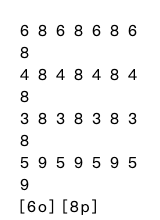Roblox Sheet

Roblox Sheet
I Don't Want to Lose Control
Zoe Wees
Doświadcz I Don't Want to Lose Control przez Zoe Wees w zupełnie nowy sposób! Użyj swojej klawiatury, aby zagrać I Don't Want to Lose Control Roblox Arkusze Pianowe na Wirtualnej Klawiaturze Pianowej. Niezależnie od tego, czy jesteś graczem Roblox piano, czy chcesz ćwiczyć klasyczne utwory, ten I Don't Want to Lose Control Roblox Arkusz Pianowy jest idealny dla Ciebie, pozwalając łatwo przejść od początkującego do eksperta. I Don't Want to Lose Control znajduje się w TOP 100 Roblox Arkuszy Pianowych, razem z wieloma łatwymi, klasycznymi, popowymi, świątecznymi i Disneyowskimi utworami do zagrania!
12 wyświetlenia



















